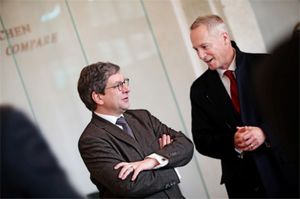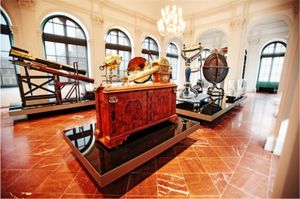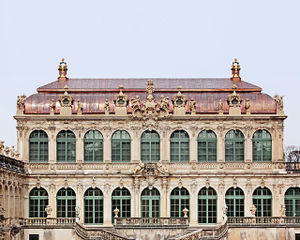Dresden rediscovers time
Dresden / Glashütte, April 2013


The Mathematics and Physics Salon in the Dresden Zwinger was closed for six years due to comprehensive renovations. A. Lange & Söhne has supported the refurbishment of the museum. Last Sunday, it reopened its doors to the public and now demonstrates the persuasiveness and splendour of knowledge even more impressively than before.^
“One of the cores of Saxony's history” is how Hartwig Fischer, Director of the Dresden State Art Collections, refers to the Mathematics and Physics Salon which reopened on 14th April 2013. Endowed with twice as much space as before, the eminent scientific history collection presents more than 400 exhibits, including clocks and watches, automata, telescopes, and globes. With its observatory and timekeeping service, it became the highest authority for all time-related matters in the late 18th century and is deemed the cradle of precision watchmaking in Dresden.
The Salon has always been of special significance for the venerable watch brand. Here, about 180 years ago, the young Ferdinand A. Lange discovered his passion for horology. His vision – to craft the world's finest watches in Saxony – was born in Dresden.
For Lange's CEO Wilhelm Schmid, sponsoring the museum is one way for A. Lange & Söhne to pay tribute to its cultural origins. “I am particularly delighted,” Schmid says, “that the historical dimension in the exhibition concept comes to the fore with new showpieces, filling gaps in the timeline from the early periods in Dresden’s history to Saxony's present-day precision watchmaking stature.”
In the extensive timepiece collection, the “42500” from 1902, the most complicated Lange pocket watch ever made, showcases the artistry and artisanship of watchmakers many generations ago. Also, a LANGE 1 from the current collection stands as a symbol for the comeback of a brand that ushered in yet another new era in Saxon precision watchmaking four years after Germany was reunified.
